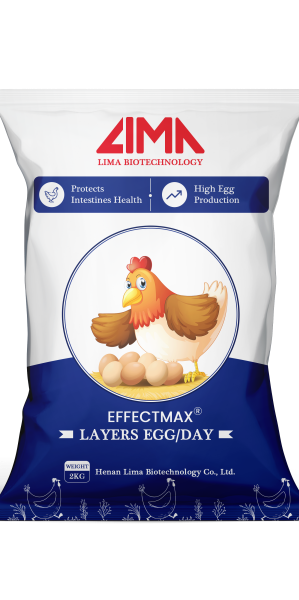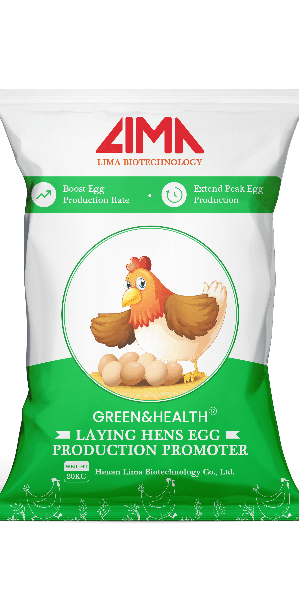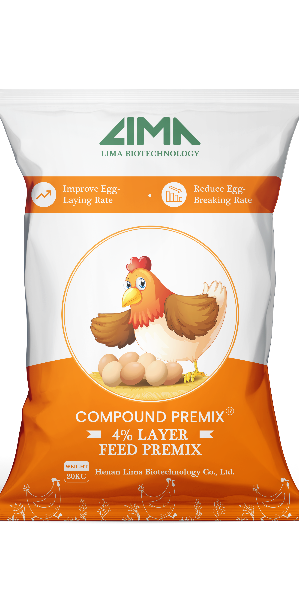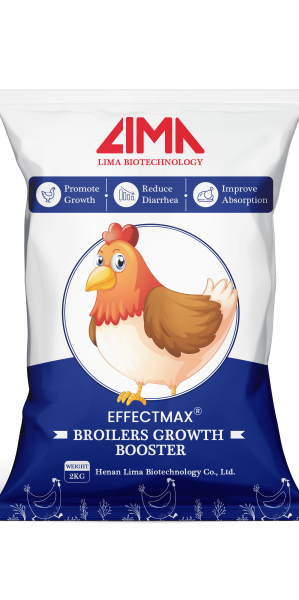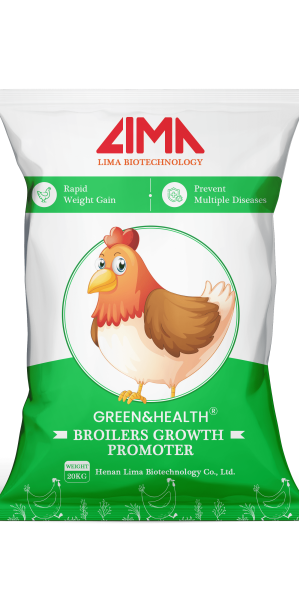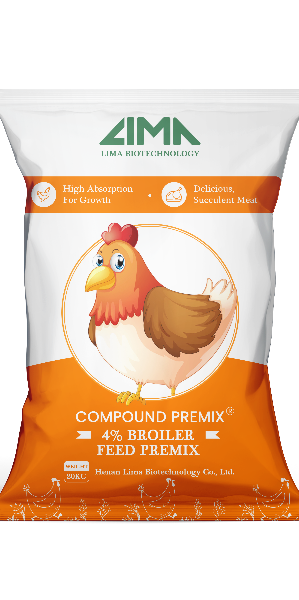Raising healthy, productive chickens isn’t just about providing a coop and collecting eggs—it all begins with proper nutrition. Whether you're raising layers or broilers, knowing what, when, and how much to feed your chickens plays a crucial role in their growth, egg-laying capacity, and overall health. In this article, we break down the essentials of feeding chickens at different stages, so you can optimize their diet and boost your flock’s performance.
What Type Of Feed Do Your Chickens Need
Chickens need a balanced diet of protein, carbohydrates, vitamins and minerals. Of these, protein is crucial for growth and egg production. If there is not enough protein in a hen's diet, egg production will decline.
Free range hens get their protein from succulent insects such as worms, slugs and snails, but these days many hens can't find these insects every day, so they need to be fed a diet that contains all the nutrients they need. That’s where animal feed additives and nutritional feed additive solutions come in. And, the type of feed you feed your chickens depends on their age:
Chicks (from hatching to 5 weeks of age): “Chick Chips” with a protein content of about 19% is suitable for chicks.
Chicks (from 6 to 18 weeks): Chickens grow rapidly at this stage and are fed “grower pellets” or “grower mash”, which usually contains 15 - 16% protein to help them grow.
Laying hens (when they start laying eggs): they should be fed “Laying hens pellets” or “Laying hens mash”, which usually contains 15 - 17% protein, to help them lay eggs regularly. You may also consider including vitamin premix for poultry deed to support optimal laying health.

When To Feed Chickens
Chickens will eat and drink as soon as they wake up because the crop is empty. A common problem is that chicken keepers don't get up early enough to provide feed in time, which can lead to bullying and feather pecking by hungry chickens as they wait for breakfast.
Chickens also eat before roosting so that they have something to digest during the night, which keeps them warm in cooler weather and is important for egg laying - after all, the breeding cycle is stronger at night and requires more nutrients.
Chickens will eat multiple times throughout the day, with the exact number of times varying by individual, age, breed, productivity and even weather. And pecking order also has an effect; low status chickens will wait until the dominant chicken is not monopolizing the feed, for example, some low status chickens will wait until all the other chickens have gone to roost before settling down to get their fill.
How Much To Feed Chickens Per Day
Generally, the average adult hen needs at least 0.25 pounds (about 100 to 150 grams) of feed per day. In addition to regular feed, fresh fruits and vegetables or poultry scratch grains can be offered to enrich their diet. Adding chicken feed additives or animal probiotics feed additives is another great way to support gut health and nutrient absorption.
A good rule of thumb to use is to refer to the 10% rule that many veterinary nutritionists use for dogs and cats, which states that snacks, additions to meals, and table scraps should not exceed 10% of the animal's daily caloric intake.
The exact amount of feed required for each chicken will vary depending on different factors, as is the case with chicks and growing chickens:
Laying chicks and broiler chicks:
The exact amount of feed per chick is more specific. Egg-laying chicks need less food for a longer period of time, while meat chicks should start eating more food earlier. Both should start out on about one ounce per day of a starter diet containing 20% protein. Maintain this diet for six weeks for egg chicks and only two weeks for meat chicks.
At the third week for meat chicks and the seventh week for egg chicks, switch to a grower diet containing 18% protein and increase to 3 ounces per day. Egg chicks will stay on the grower feed until week 16 when they start laying eggs, then switch to a laying hen feed; meat chicks will be on the grower feed for about 8 weeks and will need about 14 pounds of feed.
A brief schedule for feeding chicks is as follows:
Meat chicks: feed 1 ounce of starter feed per day for the first two weeks; switch to grower feed in the third week, increasing the amount to 3 ounces per day; at 8 weeks or the 10th week, switch to adult chicken feed at about 4 ounces per day.
Egg-laying chicks: feed 1 ounce of starter feed per day for the first six weeks; switch to grower feed in the seventh week, increasing the amount to 3 ounces per day; at 10 weeks or when the poultry is 16 weeks old, introduce an egg-laying chicken feed, increasing the amount to 4 ounces per day. When laying hens begin to produce eggs, also consider adding calcium to their diet to help form strong egg shells.

How Often To Feed Chickens
The number of times per day you feed your chickens depends largely on personal preference and whether the chickens are free range or not. Free range hens are good foragers but still need high quality feed to maintain nutritional balance. The addition of nutural feed additives for poultry and livestock feed additives can help balance nutrition gaps.
Chickens eat frequently but in small quantities, so feeding one large meal per day is not ideal; most chickens do better with two pellet meals per day. Imagine giving them an amount of feed that will last them 30 minutes to an hour, either by hand or with a feed dispenser. For split meals, give a small portion in the morning and one in the evening, and feed them before dark, as chickens don't see well in the dark and usually won't eat or drink at this time.
For chicken farmers looking to simplify feed management while ensuring optimal nutrition, Lima Biotech's range of high-quality poultry feed premixes is an excellent choice. Designed to meet the specific protein, vitamin, and mineral needs of poultry at all growth stages, LIMA Biotech ’s poultry feed premix in animal nutrition solutions help support healthy development and maximize productivity—whether you're raising broilers or layers.
If You Feed Your Chickens Less Often, Will They Eat Less
Restricting your chickens' access to food during the day doesn't really reduce feed consumption. A common result of feeding at fixed times is that some or all of the chickens eat more than usual at one time, and this overeating is not good for the digestive system and may lead to a sagging crop.
Also, unless each chicken is fed individually, dominant chickens will monopolize the feeder at feeding time, resulting in high-status chickens eating the same amount overall and low-status chickens not getting enough feed, decreased productivity, and increased health problems; it's better to give them access to the feeder throughout the day.
Some people feel that limiting the amount of feed in the morning saves money because the chickens will forage more during the day, but the nutritional value of grasses is different than forage, it still affects the health and productivity of the chickens, and those issues around feeding, pecking order, and binge eating remain.
Feeding chickens might seem straightforward, but attention to timing, portion size, and feed composition can make all the difference. Consistency and quality are key to keeping your flock healthy and productive. Whether you’re raising a backyard brood or managing a commercial farm, choosing a reliable and balanced feed source—like Lima Biotech's poultry premix—can give your chickens the nutritional edge they need to thrive.
- About Lima Biotech
- Careers-Lima Biotech
- Code of Conduct-Lima Biotech
- Conditions of Sale-Lima Biotech
- Contact-Lima Biotech
- Cookies Policy-Lima Biotech
- Find Agent-Lima Biotech
- Global Warehouses
- Investor Relations-Lima Biotech
- Legal Information-Lima Biotech
- Privacy Policy-Lima Biotech
- Success-Lima Biotech
- Sustainability-Lima Biotech
- World Class Manufacturing-Lima Biotech














